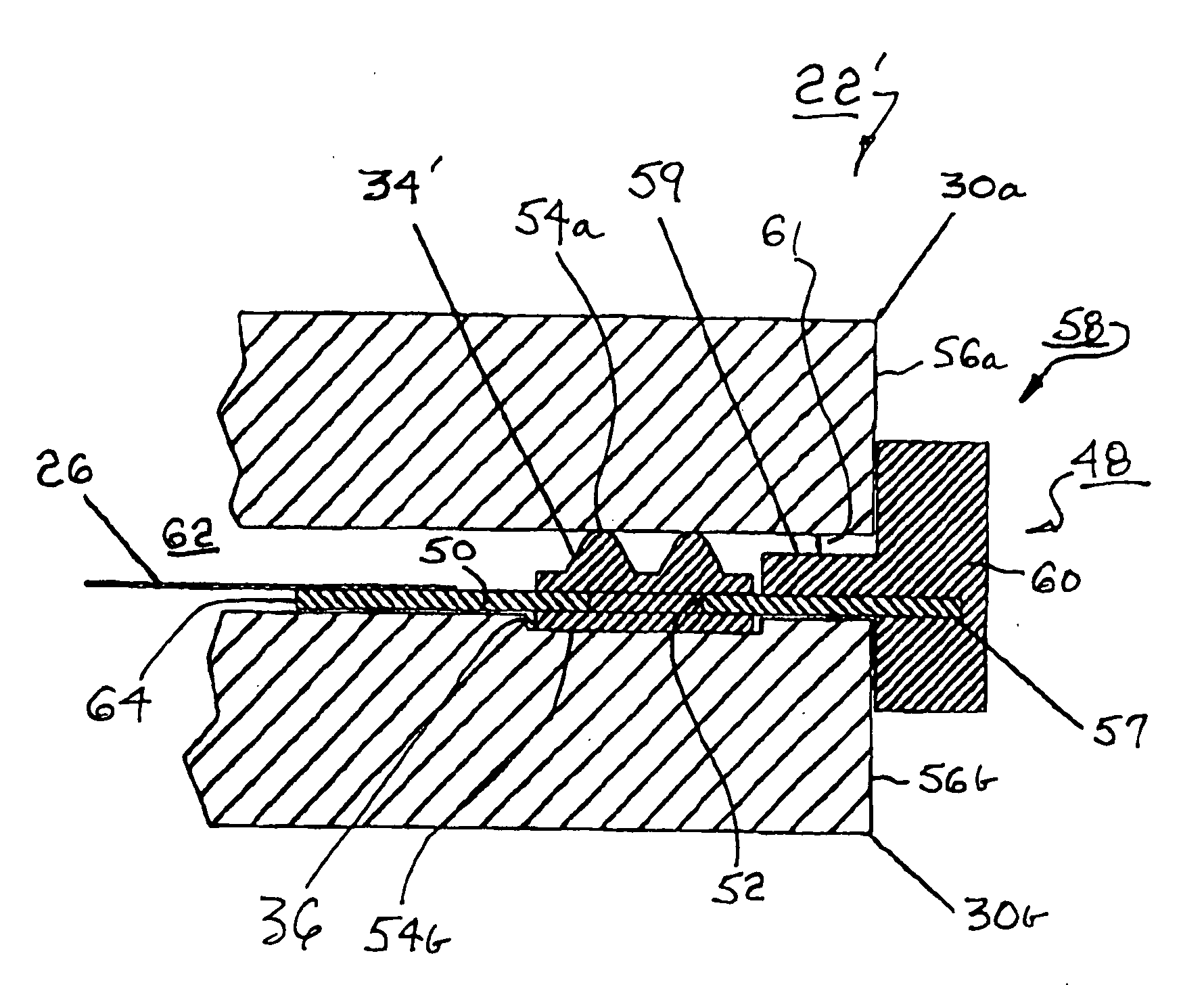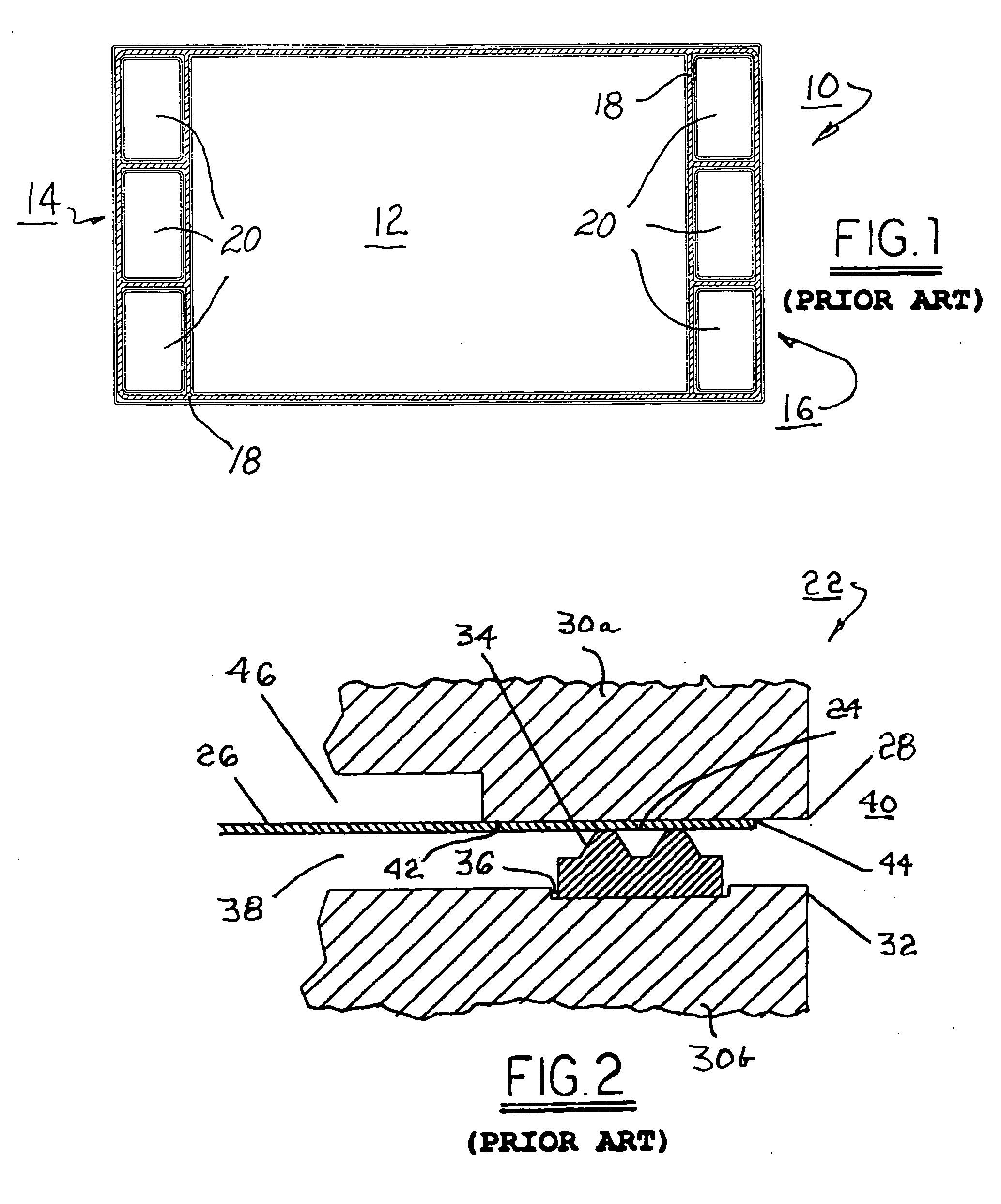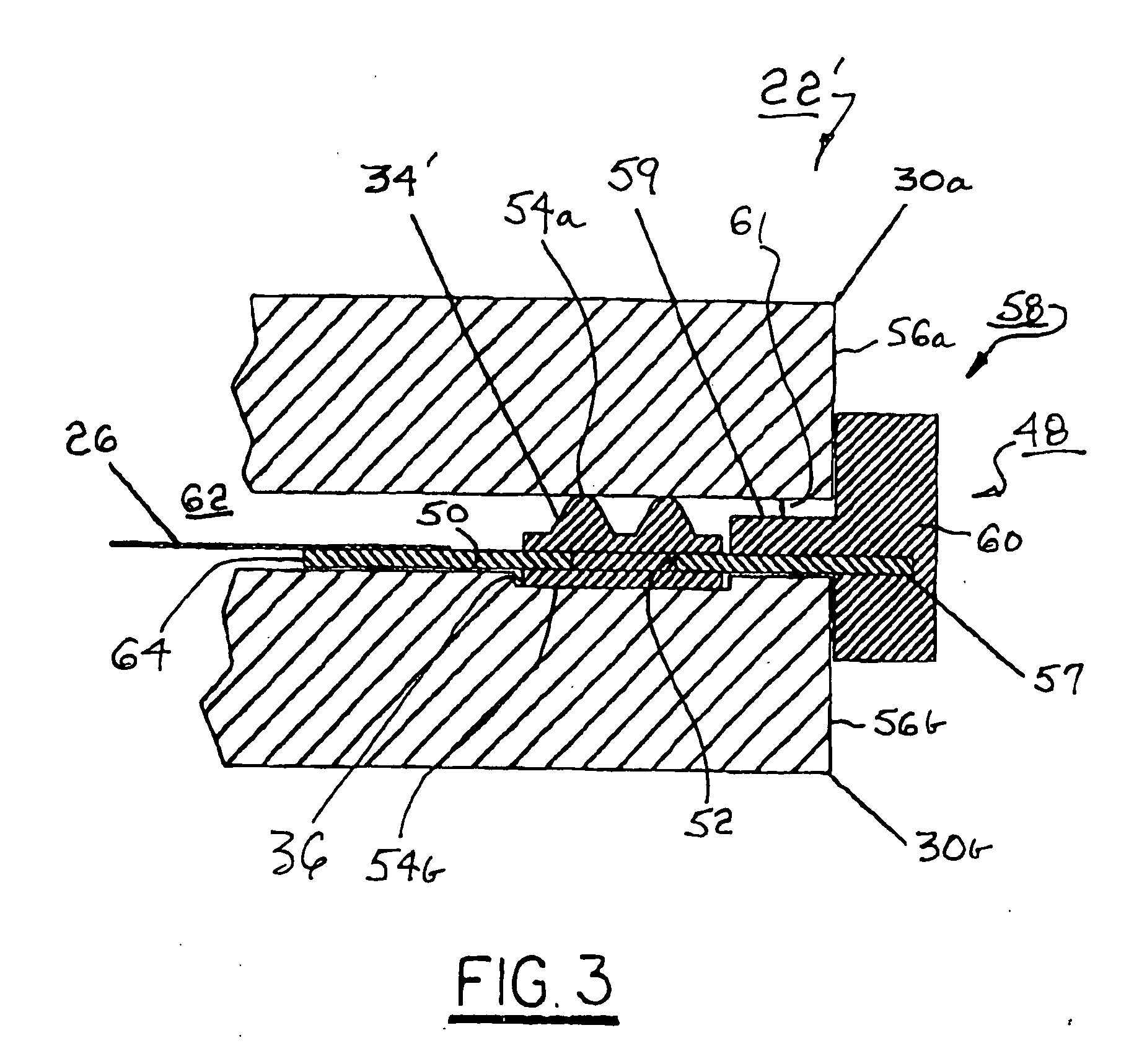Method of forming a gasket assembly for a PEM fuel cell assembly
a technology of fuel cell and gasket assembly, which is applied in the direction of fuel cells, electrical equipment, electrochemical generators, etc., can solve the problems of easy damage, easy twisting and deformation, and improper placement of gaskets, so as to improve the ease of assembly of fuel cell stacks
- Summary
- Abstract
- Description
- Claims
- Application Information
AI Technical Summary
Benefits of technology
Problems solved by technology
Method used
Image
Examples
Embodiment Construction
[0025] Referring to FIG. 1, a typical bipolar plate 10 for use in a PEM fuel cell is generally rectangular, having a central region 12 for receiving fuel cell electrodes and membrane (not shown) and first and second manifold regions 14,16 for providing fuel, air and coolant to the central region in known fashion. Plate 10 is provided with a prior art resilient gasket 18 (shown as a hatched section in FIG. 1) which surrounds central region 12 and one or more of the apertures 20 in manifold regions 14 and 16. Gasket 18 typically is formed either as an independent, flexible element or as a cast laminate on the surface of plate 10.
[0026] Referring to FIG. 2, in a typical prior art PEM fuel cell 22, an edge portion 24 of a membrane electrode assembly 26 extends between the cathode side 28 of a first bipolar plate 30a and the anode side 32 of a typically identical second bipolar plate 30b. An elastomeric gasket 34 is disposed on anode side 32, typically in a shallow channel 36, to seal a...
PUM
| Property | Measurement | Unit |
|---|---|---|
| thick | aaaaa | aaaaa |
| thick | aaaaa | aaaaa |
| electrochemical reaction | aaaaa | aaaaa |
Abstract
Description
Claims
Application Information
 Login to View More
Login to View More - R&D
- Intellectual Property
- Life Sciences
- Materials
- Tech Scout
- Unparalleled Data Quality
- Higher Quality Content
- 60% Fewer Hallucinations
Browse by: Latest US Patents, China's latest patents, Technical Efficacy Thesaurus, Application Domain, Technology Topic, Popular Technical Reports.
© 2025 PatSnap. All rights reserved.Legal|Privacy policy|Modern Slavery Act Transparency Statement|Sitemap|About US| Contact US: help@patsnap.com



